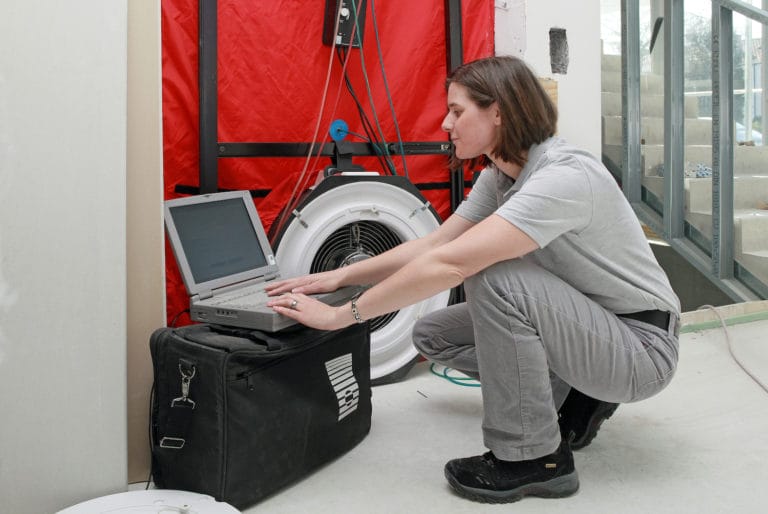Air Leakage in Homes
Air leakage in a house can cause uncomfortable drafts, but beyond that, energy researchers have discovered that sealing air leaks in a home is one of the simplest and least expensive ways to save energy. A typical house may lose about 30% of its heat through walls and ceilings, 30% through windows and doors, and 30% through general air leakage. Spending a few hours sealing leaky cracks and crevices can often reduce air leakage by 25% to 50%, which can result in savings of up to 30% of the total house heating and cooling costs.
Air leaks can be simple and inexpensive to seal if you can just find them, and that is where the blower door comes in. A blower door is a piece of diagnostic equipment that is used to measure the air leakage in a house, and to see how the house rates on a scale of “leaky” to “tight”. If a house is already tight, air sealing is obviously not required. But if it is too leaky, a blower door test can tell you how serious the leakage is and aid in locating the leaks. Once the leaks are sealed, the blower door can be used to calculate the actual amount of reduction in airflow.
Air barriers are used to block the random movement of air through a building’s cavities. This results in reduced air leakage throughout, which can reduce a home’s heating and cooling costs by as much as 30%. Although they are used to stop air movement, air barriers are not the same thing as vapor barriers. The placement of each of these barriers within a structure is climate-dependent, therefore it’s advisable to work with building professionals in your area who are familiar with energy-efficient construction for your specific climate zone.
WHAT’S A GOOD BLOWER DOOR TEST NUMBER?
The metrics and math can get a little technical so let’s put them in context. Here’s a rough scale for comparison of your blower door test number:
MEASURING DUCT LEAKAGE WITH DUCT LEAKAGE TESTING EQUIPMENT
Duct Leakage Testing equipment combines a small fan and a pressure gauge to pressurize a house’s duct system and accurately measure air leakage of the ductwork. This test is similar to a pressure test of a plumbing system. Duct leakage can increase heating and cooling costs by over 30% and contribute to comfort, health, and safety problems.
Have a question? Give us a call.



